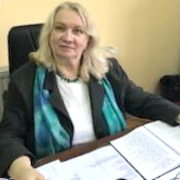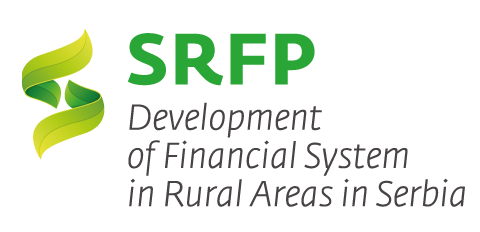Shortage of Skilled and Competent Employees in Serbia

Brain drain and loss of skilled employees in the workforce. Where are they, where are they going and what can we do to find and keep workers? Employee attraction and retention is a serious problem in Serbia.
In this discussion we raise a number of issues causing Serbian employers to attract and retain qualified staff. First is emigration, which has been caused by wars, sanctions, economic and political changes in Serbia from the latter part of 20th century. At that time, it was mainly migration of physical labor, which later expanded to higher education persons. This phenomena has been labeled as ‘brain drain’ and it represents the loss of intellectual and professional capital.
It is also discussed the problem of skills mismatching in Serbia. Skills mismatch is recognized as one of the major challenges by policymakers and stakeholders in education and employment. In transition countries like Serbia, mismatches are a consequence of economic restructuring, technology advancement and demographic factors such as ageing and emigration.
And finally, in Serbia today, there is an ongoing battle for talent. But also, a ‘talent paradox’ that explains that despite excess supply in the labor market, companies are not finding the talents they need. Companies face a paradox when discussing youth employment and are developing tools and policies dedicated to attracting and retaining these highly-desired talents. Companies are discovering that the present education system does not meet the current needs for necessary skills.
Emigration is an Ongoing Issue
Aside from products and services Serbia produces for export, unfortunately, one of the greatest exports the country produces is workers. 14% of Serbia’s population live outside of the country in a typical year, remittances from this group reaches 8% of the total disposable income of Serbia. In recent years, medium-skilled workers going abroad have increased compared to lower-skilled workers.
The proportion of migrants to the European Union for education purposes is stagnating in numbers and decreasing in relative terms. The usual ‘brain-drain’ phenomena has leveled off at this time. Albeit, Serbia will into the medium-term future remain vulnerable to the draw of higher salaries in the EU and be seen as a labor exporting country.
Serbia needs to adjust its policy of increasing the country’s supply of skilled workers by investing more in higher quality education, not just in higher education but should monitor the skills shortages and those occupations in demand on the local labor market (counting as ICT, manufacturing, mechanical engineering, construction and road transport), so that the national educational system can adjust itself to delivering a larger supply of high-demand occupations, even if this means that some of the trained workers will leave the country anyway.
Serbia has been supplying workers to Germany and other Western European countries through emigration since the 1960s. In the 1990s, the emigration wave took on renewed emphasis as a result of the political turmoil and the dire economic situation of the caused by the break-up of Yugoslavia.
 |
Vladimir Damnjanović
Country HR Head |
| In your opinion, how much has the labour market changed in the previous 3 years and in which direction will it move in the future?
V.D.: The labour market has changed significantly over the past three years. This change sets new requirements before HR as a profession and triggers the need to redefine the role of HR in business systems. The following trends seen in the labour market are predominant: 1. A reduction of unemployment brought about by new investments, the development of the Serbian economy and the outflow of qualified workers to foreign countries. This trend triggers greater competition among companies in the market and greater pressure on companies to manage attractiveness while simultaneously balancing their total compensation system costs. 2. Redefinition of the employer attractiveness concept and a change in ranking of the most attractive industries. At this moment, IT is the most attractive industry for most candidates. This stems from the high level of care for employees offered through an attractive compensation and benefits system, good balance between business and private life, flexible workhours, and flexible forms of employment. Other industries will have to follow all these trends to be able to attract and retain a qualified workforce. Stanton-Chase Newswire, Vol. 20, 2019 |
|
The 1990s were different from the 1960s but has picked up in recent years. According to United Nations statistics, 950,000 migrants reside abroad or about 14% of the total population of Serbia. Two-thirds of emigrants land in Western Europe, while 40% reside in Germany.
Such as the other South East Europe countries, Serbia is confronted with a serious emigration problem. Compared to its neighbors, Serbia more than likely is in a better situation. Latest outflows of emigrants were dictated by demand of growing and affluent economies in upper Europe. Most emigrants are eager to accept temporary work opportunities, rather than longer-term positions. According to recent data, Serbia is not in a position of losing qualified workers abroad, on the contrary, Serbia attracts a sizeable number of immigrant students from the Western Balkans, which in-turn improves its high-skilled migration balance.
The Talent Issue and Serbia
Companies are facing a talent paradox. As noted in a Deloitte report, “While there is a surplus of job seekers, some companies are facing shortages in critical areas where they most need to attract and keep highly skilled talent.” Taking into account the unemployment rate in Serbia is 12.7%, two-thirds of Deloitte surveyed companies state they have long-term difficulties in employing high-quality staff. Regardless of the high-unemployment rate among youth in Serbia (close to 30%), more than half of surveyed companies have difficulties in finding youth to employ because of better opportunities working abroad. This in turn has led to a battle for talents, companies need to focus on developing
policies for attracting and retaining talents. Having an environment that will provide employees with the chance to work on interesting projects has become the most important factor for talent retention. Foreign companies are more successful in employing high-quality staff than domestic ones; although both sides note that the current educational system does not meet recruitment needs.
By researching companies, it is concluded that domestic and foreign companies face difficulties in hiring high-quality staff. One of the reasons for this is that the education system does not sufficiently encourage the development of creativity and research skills. In Serbia, only 9.9% of respondents are completely satisfied with their study program, with 59.6% believing educational programs abroad are betters than Serbia’s, with the reason that foreign peers are getting more hands-on knowledge.
 |
Radmila Vuković
HR Director |
| Do you believe that the future will bring project-based employment or that permanent employment will continue to dominate?
R.V.: I think that, in future, project-based employment will be increasingly present in all segments of management, administration, information science, civil engineering, in fact, wherever possible and where projects truly exist. It offers flexibility regarding working hours and space, a common objective, team selection, timeframe, and a certain feeling of freedom. These are all advantages which will grow increasingly important as time goes by, particularly to coming generations. In the same way, I am certain that the long-term employment model will remain in parallel. Primarily in manufacturing organisations, I think. In places where you have daily production and daily market supply, where you have to fulfil different ISO, HACAP and other standards, where you have to have a steady number of employees qualified for that particular type of production, who have to fulfil certain health, hygienic/sanitary conditions, be trained to handle machines in a reliable and safe manner, etc. For these reasons, the employer will be motivated to retain the long-term employment model, and within that model, employees will have a higher level of social security. Stanton-Chase Newswire, Vol. 20, 2019 |
|
Serbia’s economic situation has been improving over the past ten to twenty years, which includes key employment indicators. There are groups that fall between the cracks, namely, among women and vulnerable groups and the problem with youth trying to enter the labor market. Overall, the level of education has increased in the past thirty years, but this advancement has not matched the skills and competence demanded from the labor market. Unfortunately, research on employers’ needs reveal a modest overlap between what the educational system is producing and skills demanded on the market, most affected in secondary schools (with a vocational school emphasis) and the tertiary level (university) education. Internships or work-based programs based on dual education hopefully will close this gap.
With the difficulties moving into their first job for graduates, the mismatch between skills taught and skills expected on the job seems to be a roadblock for younger persons. A lack of practical training of graduates is one the most cited reasons given by employers for recruiting qualified candidates and retention of younger persons. On the one hand, over-education is also an issue, graduates from intermediate and tertiary levels will sometimes accept lower level jobs to get the experience they need to get to the next level. This might seem acceptable, but in the long-term runs the risk of the employer developing the skills of the employee, then the employee moving on to better opportunities. On the other hand, over-education is an indication of structural mismatch, that is, demand for labor is uneven in the country showing economic problems where highly skilled workers are concentrated around certain areas. In the end, there just might be a labor demand problem, an excessive graduation level of university graduates into the economy.
Adjusting education to include more practical and updated curricula in higher education and VET training might tackle the over- and under-education situation in the Serbian economy. No matter the discussion, there still remains a large group of people that cannot match their level of qualification and skills to those demand by their jobs.
A Skilled Workforce for the Labor Market
Job creation has increased in the last few years, although hiring problems have worsened. Serbia’s National Employment Service (NES) survey data shows that employers are having increasing difficulty finding the right workers. Companies most often facing these problems were in manufacturing (38.6% surveyed), construction (37.7%), mining (33.3%), accommodation and food production (32.2%), ICT (32.1%) and transport and storage (29.4%). A higher percentage of large companies and those in Vojvodina and Belgrade report issues with locating qualified workers. In a NES survey, 69% of responding firms experienced difficulty across all occupations.
Firms consider skills gap the main reason for hiring issues. The most cited reason in a NES survey were workers lack of knowledge and skills, lack of work experience and shortage of needed professionals. The lack of required skills and work experience caused difficulty in filling vacancies, more than the candidates not accepting the salary or objecting to working conditions. So, in reality, hiring problems seem to be related more to skills gaps than to a tight labor market. Tied to this is the gymnasium curriculum in Serbia, which has not been updated in over 20 years until 2018, even though the economy has evolved. The NES survey showed that skills gaps affected dynamic firms more; firms with technology based innovation in the past several years have higher growth perspective and more likely to hire, but are confronted with a lack of skills among applicants. This skills shortage will be aggravated by an ageing population and migration.
The gaps in worker skills in Serbia are not necessarily caused by a lack of educated workers; there can also be mismatches. Companies pay a higher salary for educated workers. But diplomas do not necessarily equate to skills in demand, they depend in part on the quality and relevance of education and training. In fact, according to a NES 2018 survey, 22% of unemployed Serbians who have a university education still cannot find a job; 25% consider themselves overqualified; and 50% of those with a university education say their jobs do not need their level of education.
The connection of education to the private sector could be closer. A NES Employer Survey found that firms are not happy with the education outcomes. Although, less than half of Serbian firms provide on-the-job training and firms cooperate with the education system only for training, recruitment, and internships, rather than on a strategic level, i.e., curriculum development.
The negative effects of taxation on job creation and investment. Classification of work status has tax implications and the structure of the Serbian tax system provides strong incentives for employers to misclassify worker in some cases. For tax purposes, being classified as self-employed is better than being an employee. The incentive to misclassify high-income work has a potentially large tax revenue and social protection implications. Simplifying tax regimes and mainstreaming the tax burden across categories of workers would provide better incentives to correctly label work and reduce tax avoidance.
Sources used in this document:
- How Migration, Human Capital and the Labor Market Interact in Serbia. Mihail Aradarenko for the European Training Foundation, January 2021
- Skills Mismatch Measurement in Serbia. Vladimir Vasic, PhD, for the European Training Foundation, 2019
- Nurturing and Retaining Talents in Serbia. Nebojsa Savic, Branka Draskovic, Jelisaveta Lazarevic, Ema Marinkovic, March 2020
- Serbia Social Briefing: Causes of Brain Drain and Solutions – the Case for Serbia. China-CEE Institute, ISSN: 2560-1601, Vol. No.3 (RS), April 2019
- Labor Market for Growth – New Growth Agenda. World Bank. Trang Nguyen and Gonzalo Reyes, 2020
- Stanton-Chase Newswire. Volume 20, 2019
